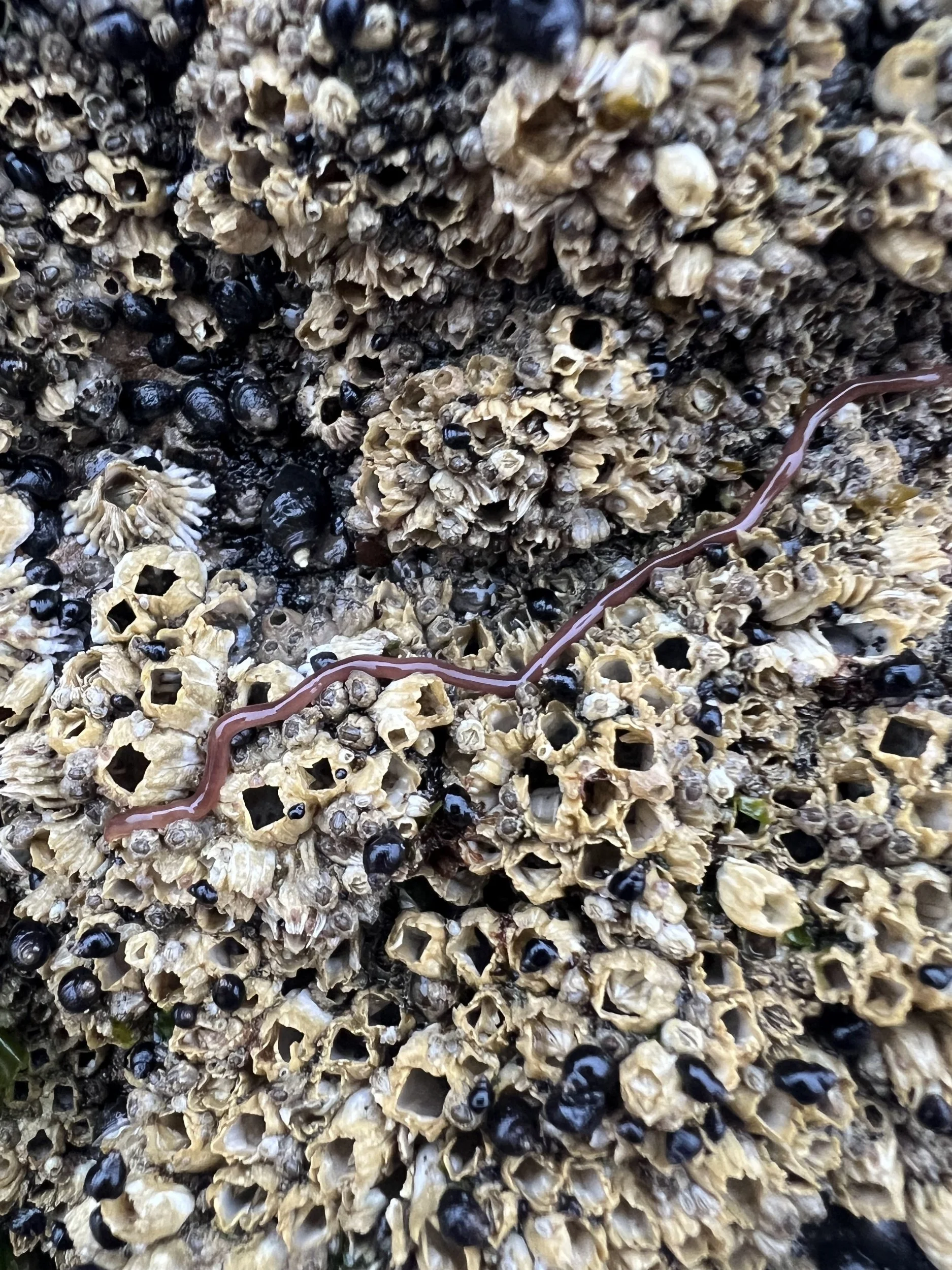Ribbon Worms (Phylum: Nemertea)
Six-lined ribbon worm (photo credit: Michelle Schwegmann)
Ribbon worm on barnacles (photo credit: Maddy Gooldy)
Description: Ribbon worms appear a lot more like traditional terrestrial worms with their long cylindrical body. They have a retractable proboscis to capture prey - a muscular appendage which either sticks, poisons, or hooks their prey before pulling the prey back into their mouth as they retract the proboscis. They range in size from 2.5 cm all the way up to 3 m long! Most of them, however, are more often between 20 cm and 1 m long. They come in a variety of colors and are often identified by their colors or striping patterns. Six-lined ribbon worms (Tubulanus sexlineatus) are dark brown or black with 5-6 lines running down the body and many more running across their body. Orange ribbon worms (Tubulanus polymorphus) are a bright red or orange color. Rose ribbon worms (Kulikovia montgomeryi) are a dark rosy pink color and has a white line at the front edge of it, like a smile. Lavender and white ribbon worms (Micrura verrilli) are maroon colored with white striped across their body. They have an orange triangular head. Green ribbon worms (Emplectonema gracile) are dark green on top and yellow-green below and tend to be more flattened in shape. Purple-backed ribbon worms (Paranemertes peregrina) are dark purple or blue-purple on top and cream colored below, also slightly flattened.
Habitat: Different species have different preferences for where to live but most can be found around rocks, mussel beds, or gravel areas. They range from the low intertidal to subtidal zones and from Alaska to California with some ranging down to Baja California, Mexico.
Diet: Many ribbon worms will eat other worms, limpets, barnacles, or anything small enough for them to capture or poison.
Tide Pool Tidbits:
Some ribbon worms are fragile and will break into pieces if handled. We still don’t advise messing with these worms for this reason but don’t worry, they can regenerate both pieces into new worms!
It’s not uncommon for ribbon worms to create tubes that they live inside of.
Reference: The New Beachcomber’s Guide to the Pacific Northwest by J Duane Sept



